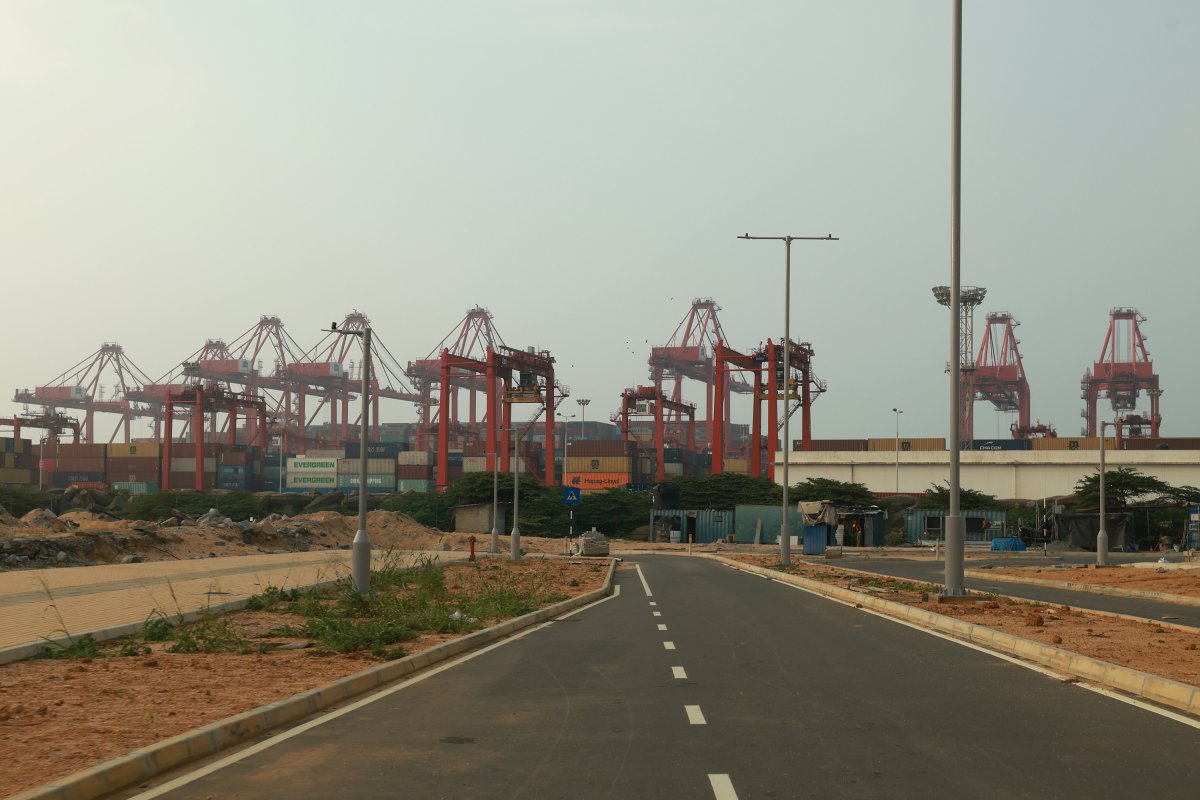-
The road ahead after NCAA settlement comes with risk, reward and warnings - 3 mins ago
-
Takata recalls BMW 3-Series cars over air bag defect - 6 mins ago
-
Middle East Conflict Grounds Flights in Budapest - 28 mins ago
-
Industrial production drops 5 percent - 31 mins ago
-
Reason Small ‘Evil’ Dog Chases Van Delights Internet - 33 mins ago
-
Deal or no deal? The expansion of Dollar Stores - 45 mins ago
-
Wisconsin receives probation, $25K fine over impermissible calls to recruits - 47 mins ago
-
Hungary Stands with India After Tragic Plane Crash - about 1 hour ago
-
Arab World Reacts to Israel’s Strikes on Iran - about 1 hour ago
-
E. coli outbreak linked to Fresh Express salads sickens 8 people - about 1 hour ago
Map Shows Global Reach of China Aid Money
As China soared to economic prominence in recent decades, it also emerged as a leading source of finance for low- and middle-income countries, according to statistical records, issuing over $1 trillion in loans, grants and other types of funding since 2000.
A Newsweek map, based on the AidData development finance database maintained by the College of William and Mary in Virginia, shows the 147 countries and regions that received Chinese funding up to 2021.
Why It Matters
Chinese government concession loans skyrocketed in the previous decade with the introduction of Beijing’s Belt and Road Initiative (BRI) to fund infrastructure in the Global South. As grace periods expired in the 2020s, China went from being a top lender to the top debt collector, according to a recent report by Australia’s Lowy Institute think tank.
This year, debt owed by the world’s 75 poorest countries will come due—a record $22 billion. Observers warn that the burden is straining vulnerable economies and shaping their politics as Chinese credit and influence grows across the globe.
Newsweek contacted the Chinese Embassy in Washington, D.C., for comment by email but did not receive a response before publication time.
What To Know
China’s bilateral lending spree under the BRI—itself estimated at more than $1 trillion to finance dams, railways and other infrastructure projects—accounts for most of the $1.34 trillion in Chinese development aid recorded by AidData, covering the period 2000-2021.
The figure is the result of 17,957 approved, active and completed projects with at least 147 recipients—countries like developing neighbors Myanmar, vulnerable regions like Gaza, or multiple countries at once. Loans or grants are funded by the Chinese government or underwritten by financial institutions like China’s Exim Bank, or by state-owned enterprises.
If canceled or suspended projects are included, China’s total commitment rises to $1.69 trillion across nearly 21,000 projects, with financing also arriving in the form of debt forgiveness, debt rescheduling, scholarships or technical training.
In the two decades covered by AidData’s research, Russia has been the top beneficiary of Chinese development finance, receiving $169.27 billion debt forgiveness, free-standing technical assistance, grants, loans and scholarships or training in China—116 projects in total.
Pakistan and Venezuela respectively ranked second and third, with $112.88 billion for 67 projects since 2002 and $70.3 billion for 178 projects since 2000, according to the available data.

Buddhika Weerasinghe/Getty Images
Chinese foreign aid is primarily overseen by the China International Development Cooperation Agency, also known as ChinaAid, which was established in 2018 to streamline aid flows and ensure they align with the country’s foreign policy objectives.
Skeptics argue that China’s lending to the developing world is intended to create geopolitical leverage via a debt trap for borrowing governments. Supporters say Chinese lending is driven largely by commercial logic rather than overt political leverage.
China denies practicing what some in the United States have called “debt-trap diplomacy.” Beijing says its loans are conducted on mutually beneficial terms.
What’s Been Said
Deborah Brautigam, director of the China-Africa Research Initiative at the Johns Hopkins University School of Advanced International Studies, told NPR: “The Chinese are on a steep learning curve as far as debt restructuring goes. We’re going to be seeing a transition: much more care about debt sustainability.”
Marco Rubio, U.S. secretary of state, told lawmakers last month: “We provide development assistance. They provides debt traps, and that’s a point over and over again around the world that we’ve made, and we’ve found receptive audiences to it.”
Mao Ning, Chinese Foreign Ministry spokesperson, told reporters last month: “A handful of countries are spreading the narrative that China is responsible for these countries’ debt. However, they ignore the fact that multilateral financial institutions and commercial creditors from developed countries are the main creditors of developing countries and the primary source of debt repayment pressure.”
What’s Next
For a long time, the U.S. has been the world’s largest single source of humanitarian aid. But amid U.S. President Donald Trump’s efforts to reduce government spending, Washington has slashed foreign aid—a funding stream that last year comprised 40 percent of total global assistance.
This included cutting more than 90 percent of the budget of the U.S. Agency for International Development shortly after taking office. Critics say the cuts have put hundreds of thousands of lives at risk and diminish a longstanding tool of U.S. soft power.
China may already be seeking to fill some of that void, having already stepped in to fund initiatives such as landmine removal in Cambodia.
Source link






























